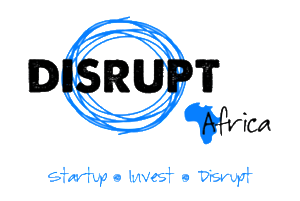Africa’s technology startup scene is vibrant – and growing fast, writes Muhammad Nabil, partners and startups strategy lead at Microsoft 4Afrika.
There are currently over 640 active technology hubs across the continent, and, according to Disrupt Africa, startups raised almost US$500 million in funding in 2019 – year-on-year growth of almost 50 per cent. Topping the list are fintech startups, who raised $107.4 million in 2019 – enjoying 25 per cent of all funding.
Despite this momentum, however, there’s a concerning trend: globally, women-led startups only receive two per cent of all venture capital (VC) funding – and the picture within enterprise tech is dimmer. Additionally, of all startups, only 22 per cent are founded by at least one woman. Africa-specific data is lacking, but sources suggest only nine per cent of startups have women-leaders, and female-led South African startups receive only 4.5 per cent of all funding.
Female-led startups are in short supply. And, where they are available, they often lack the investor backing to scale. The result is a significant loss of insight, perspectives, development and solutions, which affects us all.
African tech startups are renowned for building solutions to some of the most complex challenges. N-Frnds brings the power of digital to subsistence and smallholder farmers in Africa and other emerging markets, via mobile.
The N-Frnds mobile system, which started in Rwanda and has since expanded dramatically, is SMS-based and connects users without the need for data. Users receive vital crop and market information and get access to finance. Smallholder farmers account for 80 per cent of all food consumed in Africa, the Alliance for a Green Revolution in Africa estimates. Giving these farmers access to increased market opportunities establishes them as micro-enterprises, which is where the majority of economic upliftment and job opportunities still reside.
Technology like this is set to completely redefine the way we interact with the world. But if technology is only being created by a portion of the population, how effective will it really be? Without the input and contribution of women, how many challenges and opportunities will go unnoticed, or only partially met?
Innovation needs diversity
Microsoft recently partnered with Sehat Kahani, a tele-health startup founded by two women, Dr Iffat Zafar and Dr Sara Khurram, in Pakistan. As doctors themselves, they noticed a recurring “doctor-bride” trend, where only 23 per cent of female medical graduates in Pakistan become registered physicians. The others either move abroad, or stop practicing after marriage due to socio-cultural pressures and household responsibilities. Yet, Pakistan is in desperate need of doctors, with a doctor-patient ratio of 1:1,200.
Sehat Kahani developed a platform that pairs these female physicians with patients in need of healthcare. Patients receive affordable and quality care virtually using tele-medicine, while female physicians are able to remain active, working at home on their own hours to effectively balance family life.
If it weren’t for these two women entrepreneurs, this challenge, opportunity and approach could have been missed entirely.
Diversity is better for business
Investors recognise the need for diversity in the long-run, which makes the lack of early-stage funding for female startups perplexing. Studies show that startups with at least one female founder raise, over time, 21 per cent more VC funding than companies with all-male teams. Similarly, research also shows that if women and men participate equally as entrepreneurs, global GDP could rise by approximately three to six per cent.
Diversity in business doesn’t just yield better innovation, but better financial results too, as mixed teams are better able to recognise and capitalize on market opportunities.
So, the question becomes: What is needed to encourage more women to start businesses, and investors to take bigger bets on them earlier?
Firstly, female entrepreneurs need to be given equal access to the tools needed to succeed as their male peers, including access to finance, technology, markets, information, skills and services. Second, and as a partial solution to the first, investing in diversity starts with having a diverse team of investors. Startup mentors, investors, pitch competition judges and all ecosystem players should come from diverse backgrounds, able to recognise, relate to and see the potential in different challenges and opportunities.
Last year’s Seedstars Summit in Africa had a dedicated focus on female entrepreneurship, which is a positive step forward. However, the focus should not be on women-only initiatives or women-specific conversations alone, but on initiatives and conversations centered around all startups, where women are considered and treated as equals. Diversity and Inclusion are not an initiative, they’re a lifestyle.


